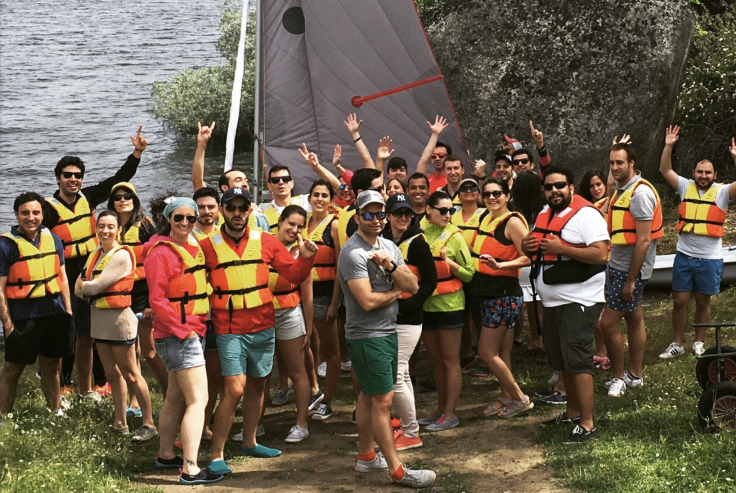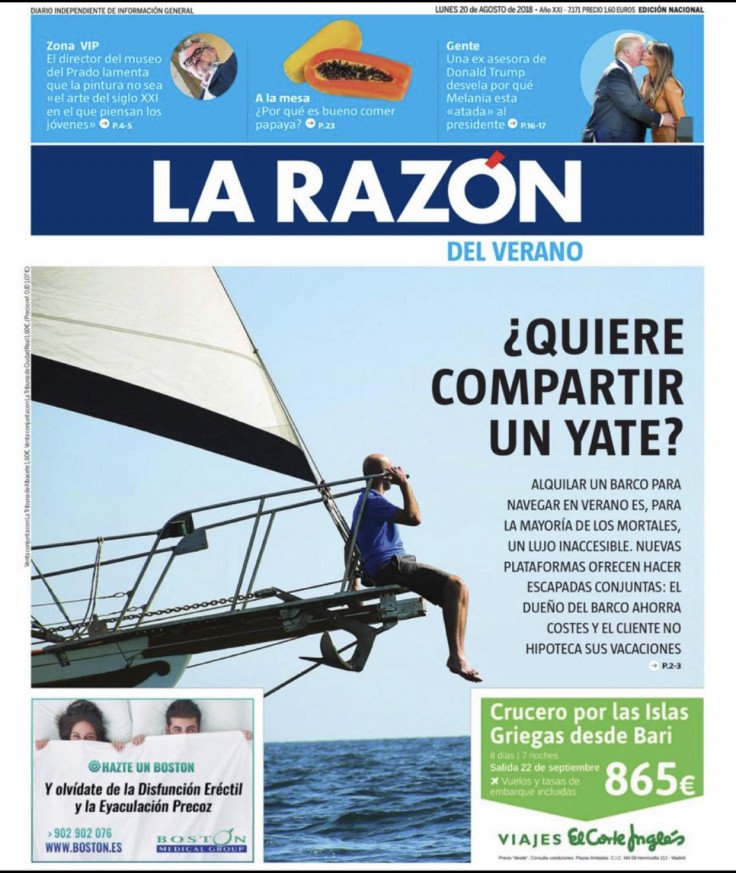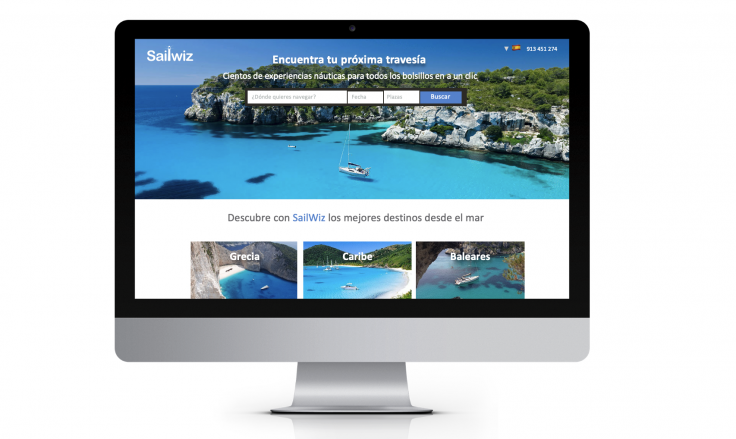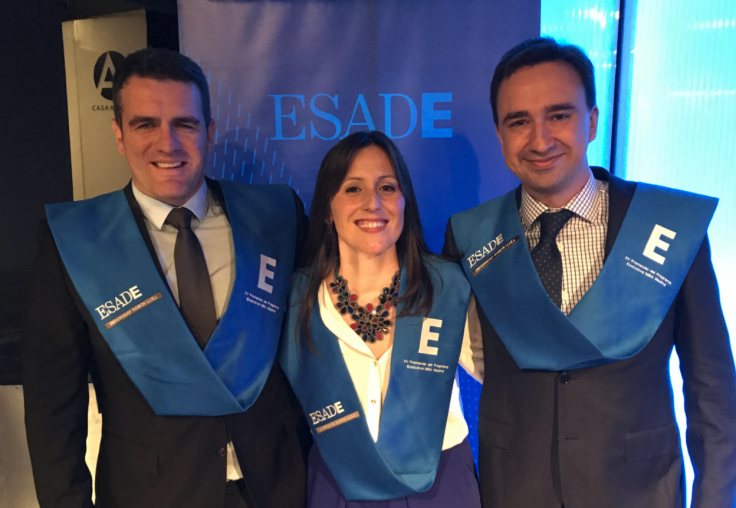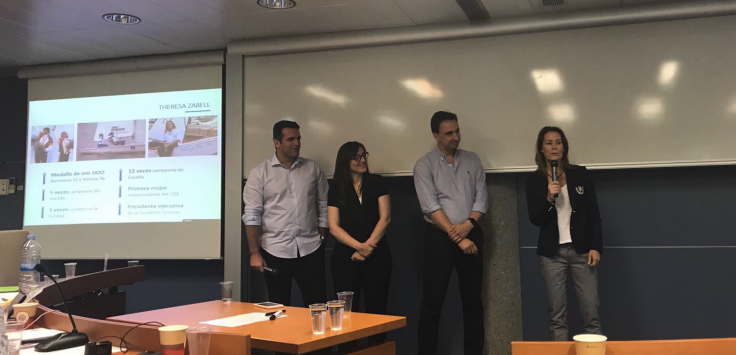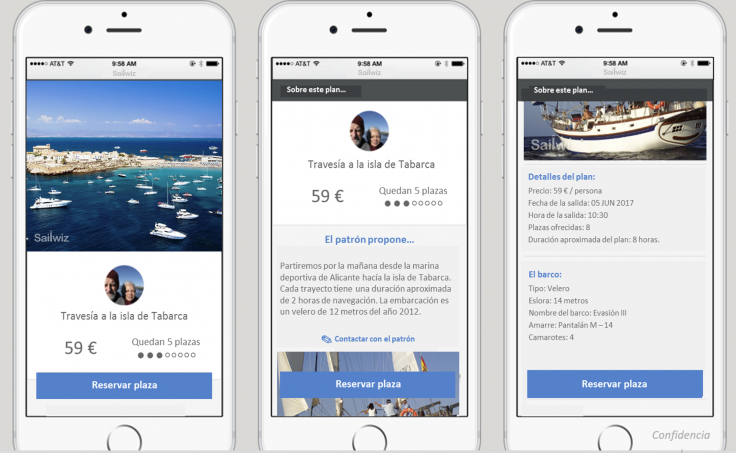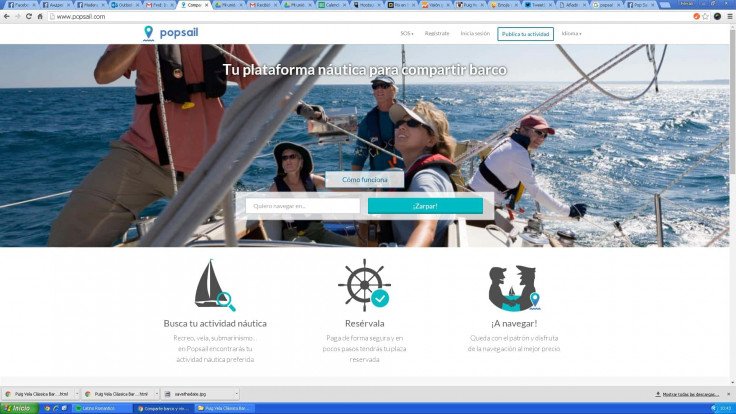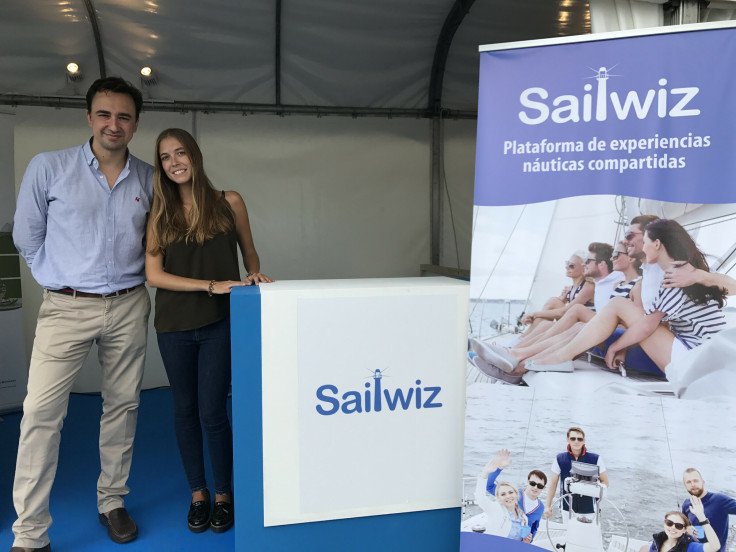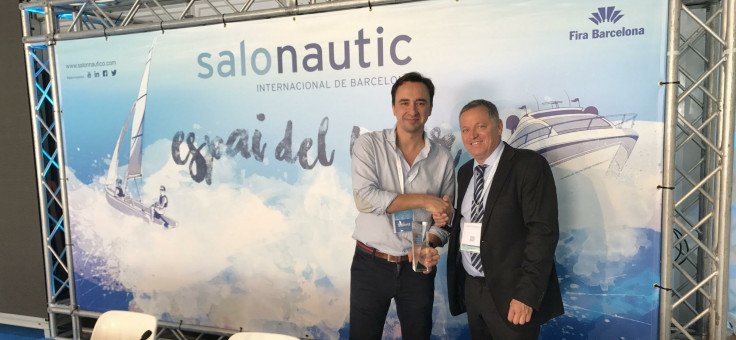This is a post written by Sailwiz CEO and co-founder Alvaro Garcia de Polavieja:
One of my motivations for starting a new project was to share the process of creation and growth, if it became a success.
With Sailwiz surpassing its first 5,000 reservations valued at over one and a half million euros, I think it's a good time to share how it all began.
-
Background at the beginning of the project
-
The Esade Executive MBA and when I met Luis Linares
-
The origin of the idea for Sailwiz
-
From an academic project to a business venture
-
The MVP and the first steps
-
The acquisition of Popsail and the launch of Sailwiz in 2018
Background at the beginning of the project
By the end of 2015, I'd spent my entire working life—more than 10 years—at the family business my father founded,
Cenáutica . It was the network of recreational nautical schools with the largest number of students in Spain. I worked there as a software developer after graduating, and later held sales, accounting, marketing, and management positions. Aside from teaching sailing, I'd done everything I could do at the company, and I'd been thinking for some time that I needed a new challenge.
Ever since I was little, I've always had the urge to become an entrepreneur. I can't say I was a good student; honestly, I was below average... but I was very motivated to learn when it came to starting a small project. I usually sum up my school days with a recurring thought I'd have while spending hours in class: "What a bore the teacher is telling me, with all the interesting things I have to do at home."
At home, I experienced from a young age how my father built the company with great effort, combining his work in the Navy with his dedication to Cenáutica. He didn't have any money to invest, so he spent many years balancing both jobs and reinvesting any income he generated. Working nonstop, with six children at home, my mother's support was essential to keeping things in order at home. My parents still had the energy to take the car and trailer with two
Optimists on weekends and go from race to race with my older brothers. I'd like to think that some of all this taught me a culture of hard work and a certain perseverance and patience to achieve things through hard work.
Perhaps because of my motivation to learn, when it came to applying knowledge, and despite my modest academic history, I decided to pursue the
Esade Executive MBA in Madrid. It was an opportunity to boost my business and financial training, consolidate the knowledge I'd acquired through experience, and, most importantly, mingle with other classmates from whom I could learn a lot. And, why not say it, to shake off my bad-student complex. But it was definitely a step toward embarking on a new project with more confidence.
The Esade Executive MBA and when I met Luis Linares
On the first day of the EMBA at Esade Madrid, all the candidates were there. I sat in a chair with a sign with my name on it and underneath it was the name of where I worked, Cenáutica. I looked at the other signs: Banco Santander, Sony, PWC, Sacyr... and thought to myself: "These people are going to realize I've sneaked in."
We had to introduce ourselves one by one, and as my turn approached, since I didn't have a great academic record to boast about or a track record in renowned companies, I shared a bit about my experience in the family business and ended by telling my colleagues that I was there to take them sailing.

Sailing day EMBA Esade
Before entering class on my first day at Esade, I met
Luis Linares , who would later become my business partner, in the hallway. We exchanged a few words; he had been asked to participate live on Esade's Periscope. (In case anyone wasn't aware: Periscope was a live video app that was bought by Twitter, the Facebook Live or Instagram Live of its time. It closed in 2021.)
I soon realized that Luis was a great entrepreneur. I was surprised by his ability to make decisions quickly, sometimes out of pure pragmatism, other times by seizing an opportunity on the fly. Luis is a natural leader and needs very little time to decide whether to take on a project or not. He had the speed of decision-making that I lacked. Halfway through the master's degree, we decided to get together to work on the final project we had to prepare in groups, and we began to shape a business idea.
Along the way, Luis and I decided to attend the Esade BAN investor forum one day, invited by Michele Quintano, the director of the EMBA program. We attended as if we were investors, and we got so into the role that we invested in one of the startups presented, a kind of SAAS for marinas. A few weeks after our investment, the CEO and founder resigned, and the project collapsed. A terrible investment and extremely expensive learning experience. One day, they told me at
Esade BAN that it's the strangest and most disastrous case of all those who attended the forum and raised investment... what a shot we had.
The origin of the idea for Sailwiz
Confident in being better entrepreneurs than investors, we continued to shape the business idea. Luis, like any true Canary Islander, is passionate about the sea and sailing, so I quickly brought him into my fold. I told him almost everything I knew about the nautical sector and the opportunities and barriers I saw. At that time, the trend in the sector was boat rental platforms, with a new one emerging every month. It was an idea we liked, and we met with the founder of one of the first to emerge in Spain. We realized we were late; it would be very difficult to secure investment with all the startups that had already emerged, wanting to do the same thing, and some of them already well advanced.
We came up with several ideas, all of them related to sailing, and we even built a "Corte Inglés de la nautica" (Nautical Corte Inglés). Later, Luis would come with me and some friends to spend a summer sailing around Ibiza and Formentera. For several years, we would spend a week sailing on the Evasión III, one of Cenáutica's boats. It was the best week of the year! I have many of my best summer memories with friends from those trips. If we could create something that would give people similar experiences, it would almost certainly be a success.

My friend Arturo, on the bow of the Evasión, the day that Sailwiz was on the cover of the newspaper La Razón
So after many ideas and several bins full of drafts and graphics, we began to discover an opportunity by observing something that was happening in other sectors and that made perfect sense for it to start happening in nautical.
I once told Luis that a good portion of the students who went through Cenáutica to obtain a nautical certification—after studying for several weeks to prepare for an exam, spending between 500 and 1,000 euros on the process, and finally earning their certification—never sail at all, or almost at all. We had surveys that confirmed this. Buying or renting a boat, the traditional alternatives, didn't seem to be the ideal solution for a good portion of sailing enthusiasts.
Little by little, we realized that although there was a large potential market for "nautical tourists," the cost of the boat, both buying and renting, the requirement to have a license and know how to operate the boat, and the need to find people to go sailing with, greatly reduced that market. Thus, the idea of creating a community of people interested in sailing to share their voyages was born. We wanted to embrace the collaborative economy trend of other sectors, which broke down barriers and allowed anyone to become a nautical tourist overnight.
Upon further investigation, we found that many professional skippers and boat owners offered the option of sharing one- or multi-day trips on their boats. There were also boat rental companies and nautical schools offering dock-to-dock trips, traditionally known in English as "cabin charters." However, these were all scattered across classifieds, social media, groups, and forums, and small websites, making it difficult for potential buyers to search and book.

The first sketch of the Sailwiz website
We thought all the elements were in place to create a platform that would connect all those frustrated nautical tourists with those who were offering places on their boats to share a few days aboard. We saw that some entrepreneurs in Spain had already tried to launch the idea, but we thought they were underdeveloped projects. We found some more successful projects in other countries that had garnered some investment, so we finally decided to pursue the idea. We were going to create "the BlaBlaCar of boats."
From an academic project to a business venture
As I mentioned before, halfway through the master's degree, we started a class in which we had to start an entire company. We were clear that we were going to use the class to shape our boat-based BlaBlaCar. Luckily,
Joan Riera , who would become one of the first investors in our first round of funding, was the professor of the course. His class format was very practical, with several simulated investor presentations. This got us moving quickly, allowing us to move forward at a good pace and receive very interesting feedback from the beginning, both from our classmates and from a panel of investors that Joan brought to his classes. In fact, the name Sailwiz itself was decided by our classmates, based on a survey of 10 names we'd come up with. Well, the truth is, it was the second most voted for... we decided to give our own opinion a little more weight among the top three.
Emilia Marina, Sailwiz's third founding partner, joined the team to "get the numbers in order." If we wanted to launch a large-scale project and gain some credibility with future investors, having Emilia, who had been at Deloitte for over 10 years and had worked in financial auditing, was a star signing. Emilia was a mother during her EMBA, which speaks volumes about her accomplishments... few people can boast of working at a Big Four company, completing an Executive MBA, becoming a mother, and launching a startup in 18 months.

Luis, Emilia and Alvaro on graduation day
Being three partners allowed us, in the early stages, to decide the path forward when there were disagreements between two of us, especially between Luis and me. Although we had a certain mutual admiration, there were times when we argued a lot about aspects of the business strategy and sometimes got quite angry. Emilia was very good at defusing the situation on occasion and giving each side a fair amount of discretion. At the time, I perhaps didn't value that role as much as I do now. Without her, Luis and I might have gone our separate ways before launching Sailwiz. Also, I haven't mentioned this before, but Luis is not only a good entrepreneur, he's also a keen rugby fan. He was tough, and he's not someone you want an argument with to get out of hand.
The last day of the master's degree coincided with the final project presentation. We wanted to nail it. We'd already given several presentations before, and we were trying to polish every detail. The presentation format had a healthy competitive edge, as Joan suggested each student simulate investing a sum of money in one of the projects presented. We wanted to finish first! We went all out, recording a video of the three of us sailing with a professional cameraman to include in the presentation, and commissioned a designer from Cenáutica to create the project logo.
To top it all off, I managed to recruit
Theresa Zabell , a two-time Olympic gold medalist in sailing with an exceptional track record, vice president of the Spanish Olympic Committee, and president of the Ecomar Foundation, to sponsor the project. We had ceased to be an academic project, and it had to look like one. In fact, three weeks before the presentation, we had already formed the company.

Theresa Zabell supporting the presentation of Sailwiz
The MVP and the first steps
By early May, we had the company incorporated, and we decided to launch what we'd learned in our master's degree was called a "Minimum Viable Product," or MVP. In our case, it was a WordPress template for apartment rentals, which we purchased for less than $100 and which a web design company adapted to our business model. It had the basics to quickly test whether what we wanted to do had potential customers, since summer was just around the corner.
Thanks to the contacts I already had at Cenáutica, who knew and trusted me, along with the Cenáutica boats themselves, we recruited several dozen skippers that summer who dared to advertise their trips on our website. In less than two months, we had established the company, launched the website, and made our first sale: a Brazilian couple who purchased a night out to see the fireworks during the San Juan festival in Alicante.

First design of Sailwiz for mobile
Emilia, Luis, and I decided to give ourselves six months to test the idea, look at metrics, and analyze whether we saw a business case. We hired
Natalia , Sailwiz's first employee, a jack-of-all-trades, who handled closing sales, recording videos, managing social media, blogging, posting trips... everything. Luis and Emilia juggled their jobs with the project, and I dedicated half my time to Sailwiz and the other half to Cenáutica, where I built a team so I could gradually take off more tasks and prepare myself to, if all went well, be at Sailwiz full-time. Without the support of Cenáutica, which, in addition to giving us our first push into advertising among its alumni database, welcomed us into its basement and provided us with materials and an office, everything would have been more complicated.
The acquisition of Popsail and the launch of Sailwiz in 2018
In October 2017, when we had just over €10,000 in sales, Natalia forwarded me an email from
Gerard Tamarit , an entrepreneur from Barcelona who had launched Popsail, an idea very similar to Sailwiz, but more focused on day trips and small tickets. Gerard told us in his email that he had decided to put it aside after a year and a half of development, but that he was offering help and advice.
Three weeks later, we met at a hotel in Barcelona, and Gerard told me about his project. His very low-ticket model required a huge volume, and that meant that, without any growth, his cash flow quickly ran out. However, he had made a lot of progress in developing the website, and our WordPress wasn't giving much more, so within a few days, we reached an agreement to lease his website with an option to buy, which we would later execute.

The Popsail website that Sailwiz acquired
Gerard also became a partner at Sailwiz and, leveraging his experience, took charge of the product design department. I got along well with Gerard from the start and have always trusted his judgment. He's methodical and likes things done right, which is sometimes complicated when resources are scarce in a startup, but from time to time he helps us get our act together on tasks that sometimes aren't handled with the rigor they should be. In addition to Gerard, we added Luis León, the developer who had worked with him at Popsail, to the team.
We had to make a significant adaptation to transform the Popsail platform into what would become Sailwiz, but by early 2018, we were ready to launch our first version of the platform. Without Gerard's arrival, it probably would have taken much longer.

Natalia and Alvaro presenting Sailwiz at the Barcelona Boat Show
That email from Gerard had arrived a week after our appearance at the
Barcelona Boat Show . We decided to sign up for a program being held that year for nautical startups. For a modest fee, we were given a small booth, and we participated in the competition among all the startups. It was our first appearance among industry professionals. True to our business model, we booked an Airbnb in Barcelona, near the fairgrounds. Natalia, I, and later Emilia, who came with her daughter, a few months old, and her husband, went there.
The experience at the Barcelona Boat Show was very positive. We received a warm welcome from the public and industry professionals, and we left very happy with the award for best startup. Everything went perfectly!

Award ceremony for the best startup at the Barcelona Boat Show
By the end of 2017, we had sold 132 spaces for just over €26,000. The enormous potential we saw in the model given its market size and the results, with a small investment, seemed sufficient for the three of us to invest €60,000, launch in 2018 with the platform we purchased from Popsail, and begin seeking financing to scale the business. I'll talk about all of that in another post.
What did you think of this article?
The average rating is 5/5



